Discovering Verona
HISTORY
Beyond the Known could be the title of the latest science fiction bestseller, but it’s just a small and captivating thread of the story that connects those lesser-known places in enchanting Verona. Beyond the fascinating Arena and the celebrated balcony of Juliet, here lies the true essence of this evocative journey.
The first image is Piazzale Castel San Pietro, from where one can admire the city from above and begin to explore the stunning historic center nestled within a bend of the Adige River.
These are dreamlike moments, especially at sunset when the sun gently disappears beyond the profiles of the oldest houses, blazing with fiery hues.
But one must immediately return to the first bridges that cross the Adige, descending along the staircase that leads through the small yet enchanting neighborhood of San Pietro, and then to the remains of the Roman theater.
Just a little further, the gaze is captivated by the image that stands out on the horizon: the Ponte di Pietra, one of Verona’s symbols. Once you cross “Pietra,” you enter the heart of the historic center, while on the other bank of the river, the citadel built by the Austro-Hungarians takes shape, with the famous Italian garden inside, the “Giusti.”
In the charming Austrian Veronetta, an unmissable walk leads from Via XX Settembre to Porta Vescovo, offering a view of the grandeur of Verona in the 19th century.
Then, it’s immediately uphill towards Santo Sepolcro, leading to the monumental ramparts and walls that climb up the Torricelle, providing a splendid view.







At the foot of the Torricelle, in Piazzo Isolo, there is a succession of enchanting establishments where one can savor the wonders of Veronese cuisine. But soon after, it’s back to the historic center, on the other side of the Adige, that reclaims attention with its grand tree-lined avenue guiding towards the famous Piazza Brà, home to the Arena, protected at the back by the Lessini Mountains,

perfect sentinels of this historical and immense monument that remains a splendid open-air theater.
The attraction of the Arena is strong, but the “Listone,” the wide sidewalk where the finest Veronese cafes have their terraces, also deserves to be explored. Following the three connected squares— Dante, Mercato Vecchio, and Tribunale — comes the house of Romeo and then Juliet’s balcony, divided by Porta Leone and Porta Borsari, which, however, as Shakespeare tells us, couldn’t even keep at bay that Love that had Verona as its backdrop.

CHARMING PLACES
“Sottoriva”, located along the bank of the Adige River, is where numerous mills once existed. The street was originally at river level and regularly flooded, as its name suggests.
It is undoubtedly one of the city’s most characteristic streets: it offers charming views with its arcades and two- to three-hundred-year-old houses, delightful restaurants and trattorias, artisan shops, and small stores specializing in art and antiques, which are real gems.
The street is flanked on one side, for its entire length, by a low and dark portico, under which – halfway through the route – you can find a curious image of the Madonna holding the Divine Child, swathed in bands, and also a Renaissance-era door, displaying all the characteristic features of this style.
Between Via Pellicciai (near Piazza Erbe) and Corso Porta Borsari, there is a hidden corner, despite its central location: in the past, Piazzetta Tirabosco was also called San Marco in Foro, like the neighboring alleys, referring to the church mentioned as early as 1172, with the appellation of San Marco alle carceri.
The corner is important, especially for Verona’s archaeological history: past scholars believed that the Capitolium stood here.
The Well of Love: legend has it that Corrado di San Bonifazio, a young soldier of the Holy Roman Empire, fell in love with Isabella Donati, a beautiful maiden who did not reciprocate his affection.


One day, Corrado encountered Isabella in the courtyard of the church of San Marco and accused her of being as cold as the water in the nearby well. In response, she taunted him, inviting him to jump into the well.
Without hesitation, the young man leaped into the well. Isabella, who secretly harbored love for him, was struck by his gesture and followed him into the icy waters of the well.
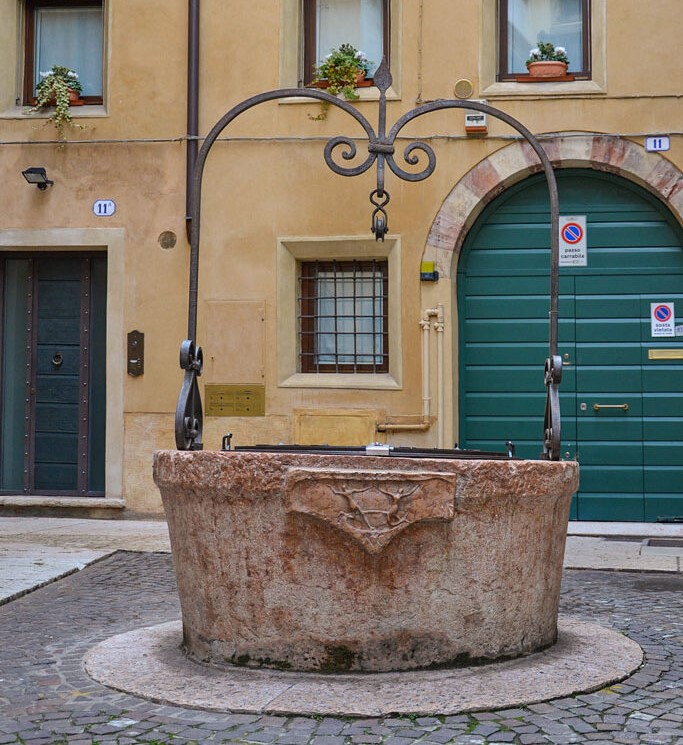
STREETS OF HIGH FASHION
Verona is an ideal destination for travelers who love to explore artisan boutiques and local shops for shopping.
The main shopping streets are located in the historic center and are all close and interconnected. These include Via Mazzini, Via Pellicciai, Via Cappello, Via Roma, Corso Porta Borsari, Corso Sant’Anastasia, and Piazza delle Erbe.
Along these streets, you can find clothing boutiques, eyewear shops and shoe stores.

In Verona, there are numerous high-fashion shops, especially along the famous Via Mazzini, the street that connects Piazza Bra to Piazza delle Erbe.
Here, you can find many brands ranging from Armani to Gucci, from Coco Chanel to Dolce & Gabbana, competing with Italy’s major fashion and style centers.
However, there are also smaller, traditional boutiques. In short, there are plenty of options to cater to different tastes and needs.
If you’re looking for a store with exclusively “Made in Italy” clothing, A23 won’t disappoint.

All clothing items have been carefully curated to ensure that the materials and artisans can replicate true Italian craftsmanship. You can find two stores in the historic center, one at Via Stella 12 and the other at Vicolo Balena.



If you’re in search of a store with cutting-edge style, especially when it comes to accessories, bags, and footwear, you can’t miss 519, one of the city’s most unique boutiques.
Here, you’ll find a mix of international and national brands, including Rick Owens, Maison Margiela, Yohji Yamamoto, and Ann Demeulemeester. You can find it at Corte Sgarzerie 6B.
Another must-visit store is Hidden Forest Market, founded in Verona by Joy, a Korean designer, but now with locations in Bologna, Bergamo, Parma, and Milan as well.
Refined and original fabrics, timeless minimalist style, and a selection of jewelry and skincare products make the clothing in this store highly sought after. Be sure to check it out at Via Pescheria Vecchia, 2.
GRAND HOTELS
Hotel Gabbia d’Oro is a 5-star hotel characterized by beautiful wooden ceilings, frescoes and prized paintings. This unique hotel of luxury is housed in an 18th-century palazzo located in the historical heart of Verona.
Guests can explore the nearby market square situated on the corner of Piazza Erbe. While occupying the old forum, it still fulfils its original function of selling vegetables and souvenirs.
A colourful panoply of building structures encases the square, such as the charming Casa Mazzanti, Palazzo Maffei, Torre dei Lamberti and Torre del Gardello.

Following an active day, guests of Hotel Gabbia d’Oro can unwind in the delightful winter garden of Orangerie – an ideal place to enjoy a light snack and a cup of coffee – before retreating to the comfortable guestrooms, adorned with oriental carpets, antique furniture, rich and contemporary accessories and fine-looking fabrics and lace of which create a romantic atmosphere.
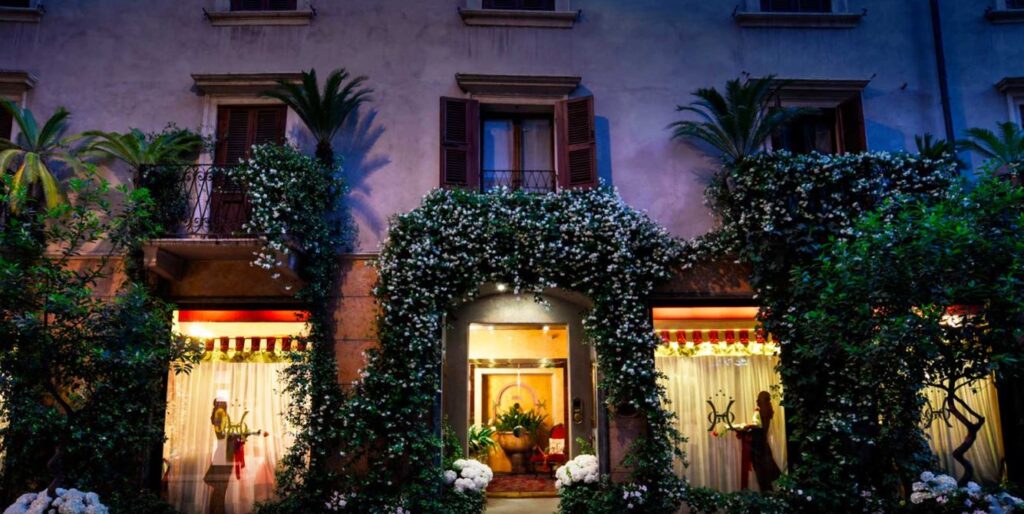



The Balcone di Giulietta was born out of the professional and personal partnership of Michael Cortelletti and Persio Munoz.
Both are “atypical” Verona locals: Michael comes from the other side of the Alps and divides his time between Verona and Berlin, though he grew up in the city’s historic alleys (his preferred playground was Piazza dei Signori and Cortile Mercato Vecchio).
Persio left his hometown Santo Domingo for love, however, after moving to Verona in 1990, he ended up becoming the most Veronese of Veronese inhabitants.
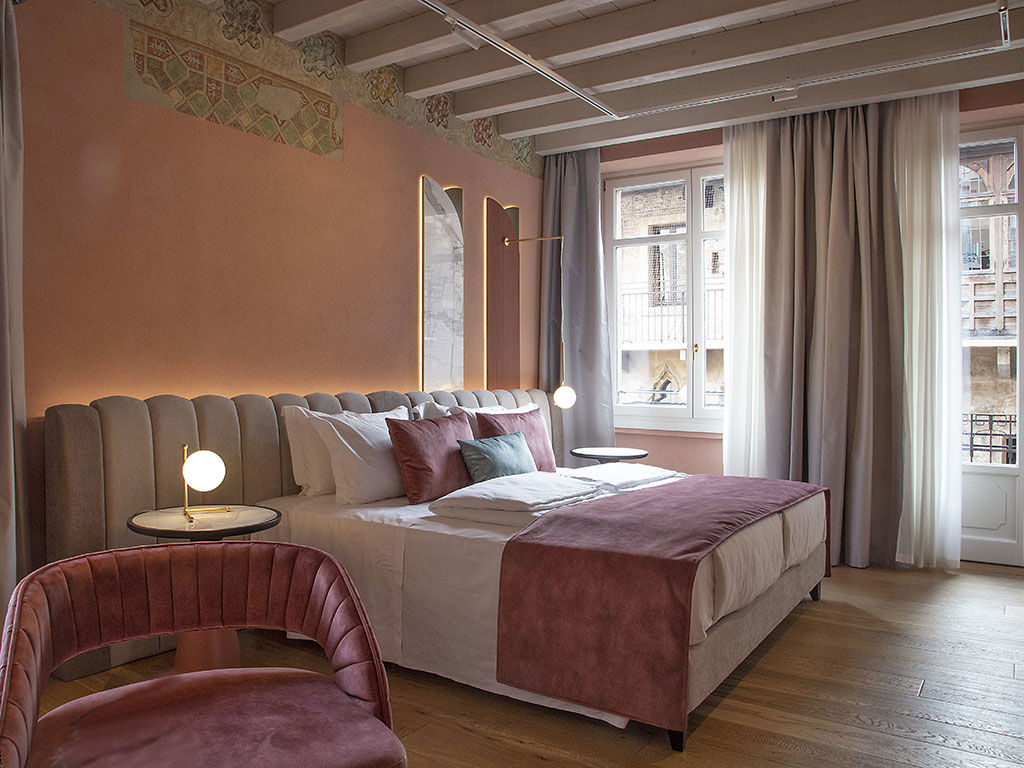
IL SOGNO DI GIULIETTA
When you think of Verona, one of the first places that comes to mind is Juliet´s House with its famous balcony in the historical center of the city: Il Balcone di Giulietta overlooks it right here, among cobbled streets and medieval palaces that were able to inspire Shakespeare’s genius.
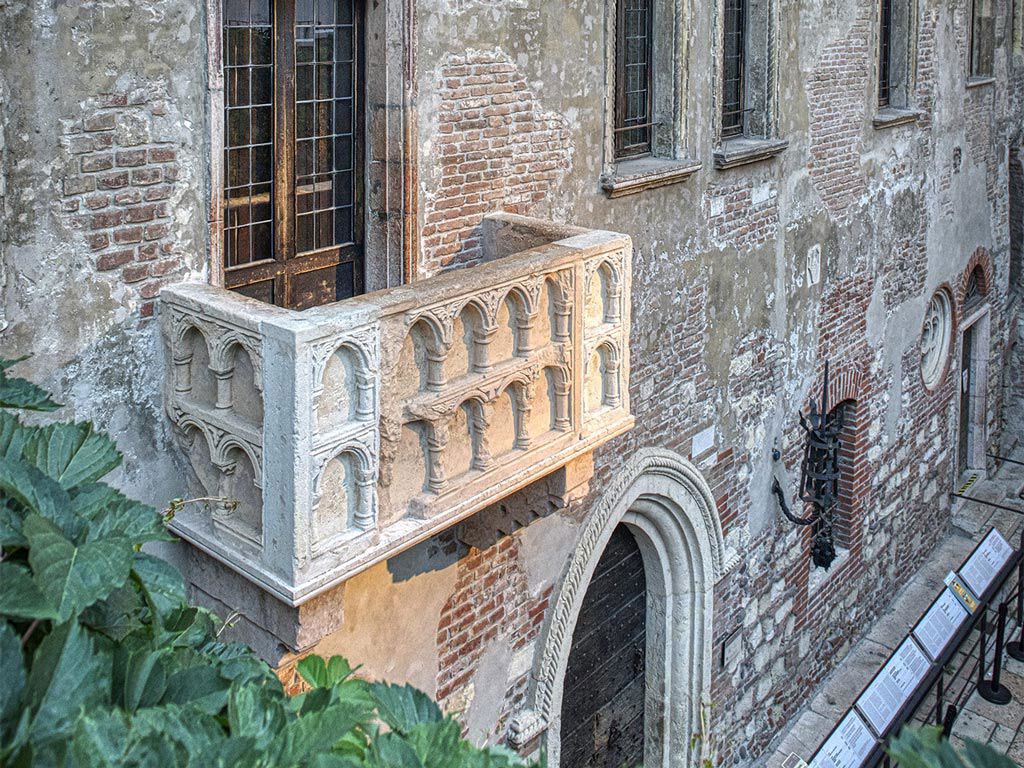
One-of-a-kind accommodation because of its location – you enter our Palazzo from Juliet’s courtyard – Because of the extraordinary view – on Juliet´s balcony, Piazza delle Erbe and Torre dei Lamberti – and because of our rooms, designed with a modern concept to delight and amaze, and to make everyone feel at home although in an extraordinary place.

RELAIS FRA’ LORENZO
Choosing the Relais Fra’ Lorenzo for a short trip or a simple escape from the city will be like living a dream: a beautiful escape to a different dimension, where space and time seems to disappear.
It is told that Fra’ Lorenzo, friend and confidant to the lovers Romeo and Juliet, used to come here among these ancient olive trees to relax and meditate in the silence and serenity of nature, overlooking the enchanting view of the city.
In the magical atmosphere of fitness area, immersed into the green of the Torricelle, you will find a nature trail, specifically thought for your well-being.
For the lovers of long hikes, the Torricelle in Verona are the perfect place. At our Relais you can find trekking and mountain sticks at your disposal.


At the Relais Fra’ Lorenzo your pet friend is always welcome and considered as a special guest, if it is of small size and up to 10 kg. The accommodation suited for staying with your dog is the Executive Suite, with its exclusive patio next to the pool.






PALAZZO VERONA
The hotel dates back to the 14th century and preserves traces of this rich past, such as original frescoes, Roman walls, splendid balconies, and traditional artwork.
The elegant and refined bedrooms are filled with natural light and feature classic furnishings in neutral tones with parquet floors.
The options range from the Single Superior to the Superior, Premium, or Premium with a view, all the way to the Junior Suite, Suite, or Suite with a view.
The rooms with a view overlook the romantic panorama of the historic city of Verona.

The result is perfectly Italian: two thousand years of history as a backdrop to modern furniture, contemporary design, and up-to-date boutique-style luxury hospitality.
STARRED RESTAURANTS
CASA PERBELLINI 2 STARS
Vicolo Corticella San Marco
In the spaces of the historic sign “12 Apostoli,” today stands Giancarlo Perbellini’s new “Casa.” A place rich in layers, which designer Patricia Urquiola has skillfully preserved and enhanced, keeping alive the dialogue with the Casa Perbellini concept.
At the entrance, an intimate and welcoming lounge creates a familiar atmosphere. Inside, three rooms characterized by warm and natural tones: the Vaulted Room, the Frescoes Room, and the Chef’s Table.
In the air, the scents and ambiance of an informal environment. On stage, the chef and his art, inspired by flavors and seasonality, memory, and emotions.
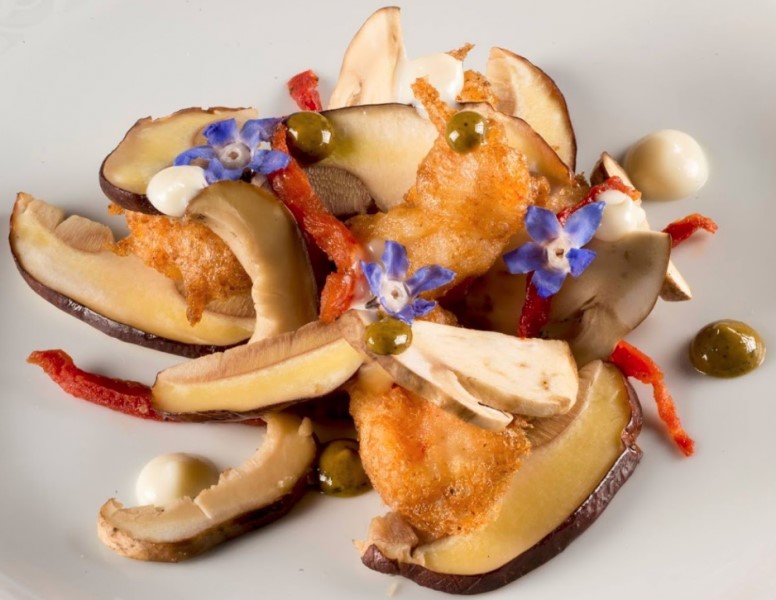

Perbellini’s cuisine is emblematic of great simplicity: “I’ve realized that all it takes is three ingredients to make a dish. Achieving it is always a challenge.”

AMISTA’ 1 STAR
Corrubbio – Verona
The refined Villa Amistà is located within a beautiful 16th-century villa just minutes from Verona. In a charming winter garden, Chef Mattia Bianchi offers cuisine that highlights the Valpolicella territory and local markets, with dishes such as cuttlefish with peas and lagoon broth or tortelli with bitter herbs, Trentosso pear, and Monte Veronese DOP.

IL DESCO 1 STAR
Via Dietro San Sebastiano

Established in 1981 by Elia Rizzo, it has experienced a seamless generational transition: the leadership is now in the hands of his son, Matteo. Emphasizing clean flavors, a commitment to sourcing high-quality ingredients, and dishes that skillfully combine both sea and land elements, they also pay significant attention to international influences, drawing from Matteo’s experiences. The result is fun and creative dishes that draw from tradition while adding innovative touches, such as the “in cocotte” egg or lukewarm spaghetti with aromatic herb sauce and langoustines, and even marinated sea bream with pistachio guacamole and “acqua pazza” mayonnaise.
FAMIGLIA RANA 1 STAR
Oppeano – Verona
Italy’s most famous pasta-making family has opened this restaurant and earned a Michelin star thanks to the cuisine of Chef Giuseppe D’Aquino. Hailing from Naples and professionally trained in France, Brazil, and the Arab world, he brings to the table a cuisine characterized by fusion dishes, such as the mosaic of tuna and amberjack with Leche de tigre or the kabayaki eel with fermented cabbage, watercress, and caper salad.

NIGHTLIFE
Piazza delle Erbe is one of the focal points for the start of the evening, a meeting point for an aperitif. The iconic venues in the area include the renowned Casa Mazzanti Caffè and Caffè Borsari.
For those inclined towards alternative and live music venues, we recommend Hartigan’s Irish Pub and Hard Rock Cafe Verona. For a quieter evening, we recommend the Cocktail Bar Archivio, for an aperitif, Osteria Caffè Monte Baldo, for a romantic dinner, Antica Bottega del Vino.
Veronetta is undoubtedly the heart of the city’s nightlife. After an aperitif in Piazza delle Erbe or dinner in one of the traditional taverns in the center, the evening continues in one of the many venues here and goes on until the early hours. Here, you’ll primarily encounter university students and people aged 20 to 30.
The iconic venues include the renowned Rivamancina and The Soda Jerk. For those more inclined towards alternative and live music venues, we recommend Veniceberg and Malacarne. For a quieter evening, we recommend the Art Café LimeOlé House, and for an aperitif or romantic dinner, Osteria ai Preti.

Informations concierge@sinelitegroup.com
Reservations booking@sinelitegroup.com




